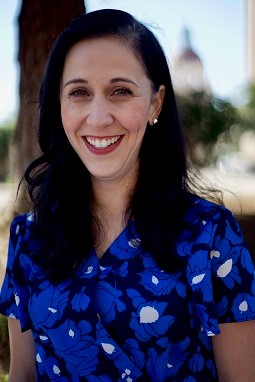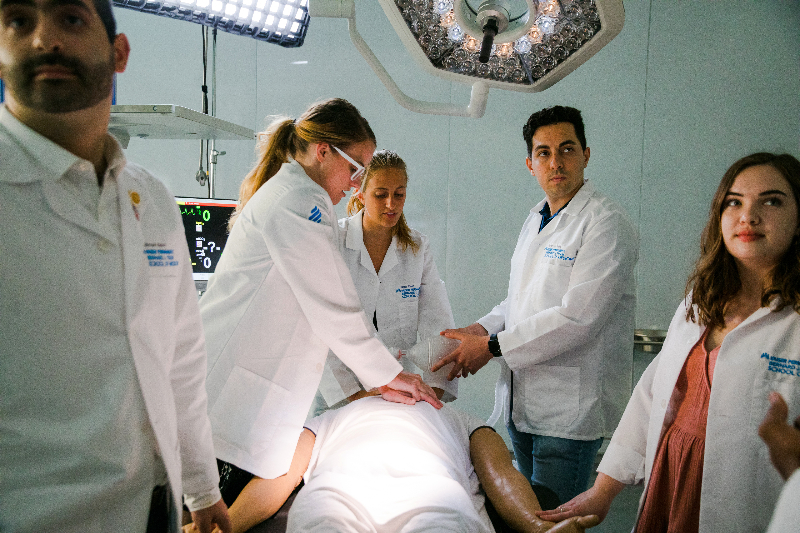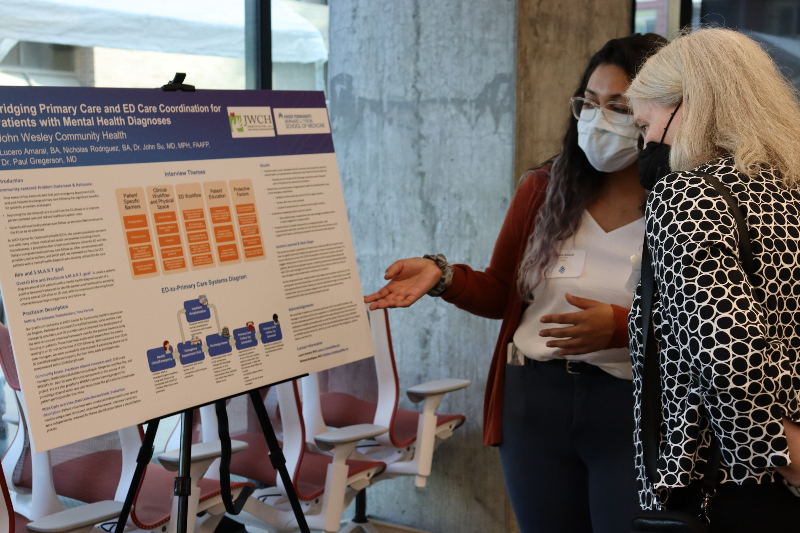Kaiser Permanente Bernard J. Tyson School of Medicine’s Simulation Center provides hands-on experience in a supportive environment.
Inside Perspective: Shari G. Chevez, MD
Grounding Medical Students in Diversity, Inclusion, and Health Equity
This is a series of first-person pieces from the Permanente physicians on the ground floor of creating the new Kaiser Permanente School of Medicine.
Who am I?

My primary roles as a mother, a physician, a wife, an advocate, and a leader currently have my full attention and energy. It helps that I have the best son ever, 10 years of amazing relationships with children and families in my practice as a Permanente pediatrician in Riverside, Calif., a husband who leans in with me each day, a chief of Service who I partner with as an assistant chief of Service, whose goal is to create the best Pediatric Department in Southern California and the most inspiring, meaningful work as I help lead the Southern California Permanente Medical Group (SCPMG) Center for Diversity, Inclusion and Health Equity with my physician partner Madalynne Wilkes-Grundy, MD.
Who I am today and the life I am honored to embrace I attribute to one question that I was asked in my senior year of college as part of the Minority Medical Education Program at the University of Arizona. It was a summer program for students with an aptitude for math and science who were unclear of their career path.
A counselor in the program asked me, “Have you ever considered medicine? I think you would be a wonderful doctor.” It had not crossed my mind before she asked, despite my academic success or desire to be of service to others. Her suggestion and belief in me planted a seed and was all it took. I never looked back.
At my graduation from Stanford Medical School, with my identity as a first-generation Latina college graduate from a rural Arizona town and a disadvantaged socioeconomic background, I became an MD. With my MD came “great opportunity and great responsibility.” The common thread and passion in my personal and professional career since I made the decision to become a physician has been toward equity.
Something I heard, although unsure of the source, captures the essence of my practice of equity – “When we treat people equitably we recognize, respect and celebrate differences.”
What am I doing for the School of Medicine?
It’s a very exciting and fulfilling time in the history of Kaiser Permanente as we expand our impact beyond the footprint of health care and into medical education. We have decided to prioritize in our medical school philosophy and mission the foundational pillar of diversity, inclusion, and health equity. The task then becomes the building of tactics, process, and framework to define and create what that means to us.
Toward that end, the Diversity and Inclusion Brain Trust was created. The concept of a Brain Trust is a group of close advisers to a decision maker, prized for their expertise in particular field; a “board of strategy.” Our D/I Brain Trust is a collaboration between esteemed Kaiser Permanente physicians across the enterprise with passion, expertise, and commitment to equity, diversity, and inclusion and the Kaiser Permanente School of Medicine Planning Team led by Marc Klau, MD, and Beth Roemer, assistant dean of Admissions, Outreach, Diversity and Inclusion.
Our D/I Brain Trust, at its core, provides diversity of thought, leans on the life and educational experience of its members, and is rooted in an honored inclusive environment for rich and authentic discussion. The voices of diverse physicians are “at the table,” as the decision makers listen and collaborate, facilitating a 360-degree perspective on the implications of our decisions as we move forward as a medical school.
My role as the regional physician co-lead for SCPMG Center for Diversity, Inclusion and Health Equity affords me the privilege to be part of this group. Kaiser Permanente is a clear leader in issues of diversity, inclusion, and health equity – earning accolades like the NCQA MultiCultural Health Distinction, which Kaiser Permanente Southern California received, and Kaiser Permanente’s ranking of No. 2 in DiversityInc’s list of top 50 companies for diversity in the United States.
Health equity and closing health disparity gaps is a high priority in Southern California. All of our members have equal access to care yet there are still gaps in health outcomes. For example, we are currently focusing on improving hypertension control and flu vaccination rate in our African-American members and colorectal cancer screening and diabetes in the Latino population.
In a study published in the New England Journal of Medicine in 2014, “Racial and Ethnic Disparities among Enrollees in a Medicare Advantage Plan,”
the study shows that substantial disparities in intermediate outcomes continued to persist in Medicare Advantage health plans nationally for blacks as compared with whites with hypertension, cardiovascular disease, or diabetes in 2011. These disparities were seen in all regions except the West, where Kaiser (Permanente) health plans achieved substantially better control overall.”
How we do this is clear to us and we can teach others.
One in 10 of our members in Kaiser Permanente Southern California prefers to communicate in a language other than English. Effective communication in a medical setting is highly associated with increased quality, compliance, trust, and satisfaction. For almost 10 years, our language concordance program matches physicians who are bilingual – and sometimes multilingual – with limited English proficient patients, allowing direct communication between the doctor-patient in the patient’s preferred language. We can demonstrate that when this match happens, health and trust, among other measures of success, improve. We have just over 1,000 physicians with validated language proficiency in 24 different languages.
There are no comparable language concordance programs in a health care delivery system like ours that we are aware of, therefore, others can learn from us.
These are just two examples of how we practice medicine and deliver care, which lend to equitable outcomes for patients and overall better health for communities.
How’s it going?
The philosophy, criteria, and process on admissions, and the curriculum have been the D/I Brain Trust’s focus thus far. The group is thoughtful, insightful, curious, and innovative in their thinking all the way down to the discussion of holograms.
Speaking of the holograms, there is a lot of talk about the absence of an anatomy lab in our School of Medicine and in its place the use of holograms to teach anatomy. As examples in discussing the curriculum, requests, and ideas from the D/I Brain Trust regarding the anatomy lab emphasized the need and opportunity to present ethnically, racially, and gender diverse holograms coupled with focus on diseases that affects specific populations at higher rates, like diabetes mellitus in Latinos. Questions related to accommodations for a student with visual impairment using a virtual reality technology were considered. How should we teach about death and dying incorporating cultural values? Each question and idea leads to another so that the collective experience and professional and personal success of each member of the brain trust is leveraged and utilized as a “board of strategy.”
As conversations build and visions and plans become solidified, I can only speak for myself but it makes me want to apply to our medical school. Learning this way makes sense and is meaningful in a different way than the “traditional way” of training physicians. I truly believe our Kaiser Permanente School of Medicine has the potential to create courageous physician leaders of change within the profession and in society that will lead the transformation of health care delivery in our nation.
So, to answer how’s it going? It is going very, very well.


